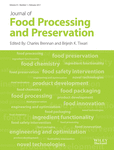Microbial Reduction and Sensory Quality Preservation of Fresh Ginseng Roots Using Nonthermal Processing and Antimicrobial Packaging†
Mention of trade names or commercial products in this article is solely for the purpose of providing specific information and does not imply recommendation or endorsement by the U.S. Department of Agriculture. USDA is an equal opportunity employer.
Abstract
Multiple nonthermal intervention treatments and packaging, alone or in combinations, were used to extend the shelf life of fresh ginseng roots. Fresh ginseng roots were treated by gamma irradiation, ultraviolet light, antimicrobial coatings, sanitizer washing and packaged in vacuumed pouches or regular PET boxes. Treated roots were stored at 4C and 60–70% relative humidity for 6 months. Total aerobic bacteria, yeast & mold, weight loss and quality changes were monitored during storage. All treatments significantly reduced microbial loads on roots. However, gamma irradiations and ultraviolet light significantly impacted the sensory quality of roots, resulting in browner color and softer texture as compared with other treatments. The vacuum packaging also negatively impacted the quality of roots. The combination of sanitizer washing, edible coating and box packaging can extend the shelf life of fresh ginseng roots to 6 months. Therefore, this study provided an effective approach to maintaining microbial and quality stability of fresh ginseng.
Practical Application
Fresh root and tuber crops, such as ginseng roots, come from soils, thus easily being contaminated with microorganisms, which would reduce their microbial shelf life and quality. This study demonstrates that the combination of nonthermal processing and packaging can extend the shelf life of fresh ginseng roots to 6 months. This approach will be of value to farmers to expand markets for fresh ginseng or other fresh root and tuber crops.




